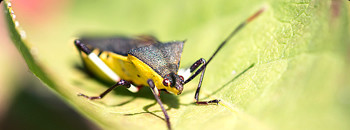Cathie Lavis is a professor of horticulture at Kansas State University. Her expertise includes landscaping, arboriculture, irrigation, and landscape contracting. She provides insight for homeowners and gardeners on plant care, selection, and more.
Although the removal of dead, damaged or diseased branches and stems can be done anytime during the year, there are better times than others.
Don’t brave the cold with your pruning shears in hand. When the temperature is below freezing, the possibility for tissue damage increases. This is because cold, dry wind along with drier soils and plant tissues can increase the effect of the cold. Pruning during the winter may result in damage near the pruning cut. Exposed pruning cuts make the plant tissue more susceptible to damage as well.
I know from experience! I have pruned Junipers during winter only to find dried, brown foliage surrounding the cut in late spring. This is most likely a result of tissue dehydration caused by winter winds. In moderate winter climates, the rules for pruning change considerably. Plants differ considerably in their cold tolerance so it is important to know the type of plants you have in your landscape. The real trick is knowing when severe freezing is over. You might want to keep a journal so you can track the weather conditions in your own area.
While more research is needed to confirm the ideal time for pruning, some studies suggest summer pruning results in less stem decay than dormant-season pruning. On the flipside, little or no sprouting occurs on a dormant plant (no leaves on deciduous plants). Research has also found that pruning wounds close more rapidly when pruning is performed just before buds swell and new leaves appear in early spring. An additional consideration is that during late winter and early spring, plants are coming out of dormancy and energy reserves are low so it is best to avoid excessive pruning until the leaves have hardened and become dark green.
Here are a couple general pruning guidelines to follow when it comes to pruning your trees and shrubs:
1) Light pruning or removal of less than 10% of the foliage can be done on most species just about any time.
2) Most woody plants when subject to moderate (10% of foliage removed) or heavy (more than 25% of foliage removed) pruning during early spring will respond with excessive sprouting so if moderate pruning needs to be done, wait until after the leaves are fully expanded and dark green, usually by late spring to early summer.
Ultimately, timing of pruning will depend on the tree or shrub species, the results desired, the condition of the plant, and if there is any possibility of spreading disease and increasing insect damage.

